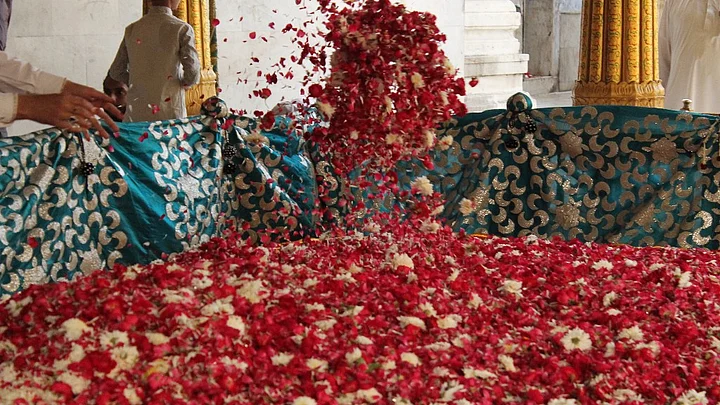Delhi celebrated the Mughal tradition of Phool Walon ki Sair – an annual flower procession that was first introduced in 1812, during Mughal King Akbar Shah II’s reign.
When his son Mirza Jahangir was exiled to Allahabad under the orders of the British Resident, Akbar Shah II’s queen Mumtaz Mahal Begum vowed to offer a chaadar of flowers at the Dargah of 11th Century Khwaja Bakhtiar "Kaaki" at Mehrauli.
And when Jahangir was released, the queen mother dutifully kept her word and led a week-long flower procession to Khwaja Bakhtiar’s dargah. To add a dose of secularism among Akbar Shah’s subjects, the flower procession was also taken to the Yogmaya temple in the vicinity.
This marked the beginning of a unique secular tradition, which is the carcass of India’s tolerant past.
According to historical account the last Mughal king, Bahadur Shah Zafar, wanted to hold the procession even when Delhi was under siege by the British.
Large number of Hindu womenfolk and children visited the shrine with flowers to pay their respects.
When I entered the Dargah, I saw throngs of women facing the perforated wall and offering prayers along the narrow corridor to the dargah.
Some women were even clinging to the walls.
About half an hour later, I realised what the interest towards walls were about.
A signboard at the end of the long corridor marked the restricted border for females into the inner sanctum of the dargah. So, disappointed at not being able to witness the main event, eventually, I thronged around and clung to the walls too.
Thankfully for me, I had a male friend fill in for me in the inner sanctum. The sufi saint’s tomb was a bed of roses, literally.
And I witnessed the dargah’s beautiful ceiling, albeit, second hand.
The likes of Jawaharlal Nehru had inaugurated the event in the past. This year Delhi’s Lieutenant Governor, Najeeb Jung, was invited as the chief guest.
After the ritual offering of the chaadar, a small performance was put up for the villagers and visitors, along the traditions of the dervishes.
The next day the procession walked to the local deity Yogamaya Devi’s temple with an offering of floral pankha (fan).
As per traditions, the smaller population of Muslim visitors gave their offering of flowers to the goddess first.
Yet another small function was put up by the locals depicting the myths of Kaali and Krishna.
As the event drew to a close, little children gathered all the leftover flowers from the procession and got into flower fights with each other.
